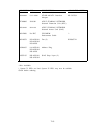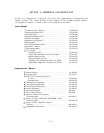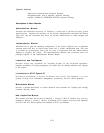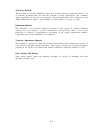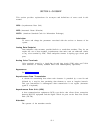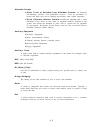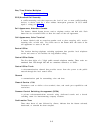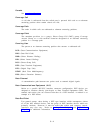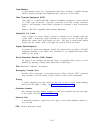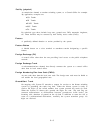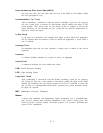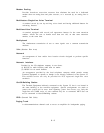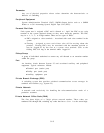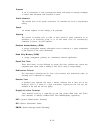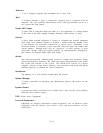Data Module
A data interface device (i.e., Asynchronous Data Unit) providing a standard interface
between customer provided data equipment and a data port on the switch.
Data Terminal Equipment (DTE)
DTE refers to a specific RS-232C connector termination designed to connect directly
to a DCE type connection.
Typically associated with video display terminals,
printers, and computers which either originate or terminate a data transmission
path.
Refers to RS-232C compatible Data Terminal Equipment
Delay-Dial Tie Trunk
After a request for service (called a seizure) is detected on an incoming trunk, the
system sends a momentary signal followed by a steady tone over the trunk. This
informs the calling party that dialing can start. This type of trunk allows dialing
directly into the system.
That is, the digits are received as they are dialed.
Digital Data Endpoints
In System 25, digital data endpoints include any digital device providing a RS-232C
connection interface to the switch. The connection is via Asynchronous Data Units
(ADUs) to the switch.
Direct Extension Selector (DXS) Console
An option at the attendant console that allows an attendant direct access to voice
terminals by pressing a Group Select button and a DXS button.
EIA: (Electronics Industries Association)
Emergency Transfer Unit
Provides direct connection of designated Power Failure Transfer (PFT) registered
voice terminals to the CO during a power failure or other service interruption.
Erlang
A traffic measuring unit that expresses the load of one or more traffic-handling
devices [36 CCS equals 1 erlang - see CCS (Hundred Call Seconds)].
Extension Number
One- through four-digit number assigned to each voice terminal and data end point
in the system. Also see “ Personal Dial Code”
External Call
A connection between a system user and a party on the public telephone network or
on a tie trunk.
FRL: (Facility Restriction Level)
9-5



